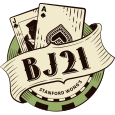edge
In the monthly CBJN there is an "edge" column. What assumptions are made to come up with this? Is some sort of bet variation/count strategy assumed? I would think so, otherwise, a DD game with just S17, ds with a .19 edge, couldn't be as good a game as a 6-deck shoe that has S17,ds,ls, and rsa with a .26 edge.
The edge is the house advantage assuming perfect basic strategy. All else being equal, double deck has a lower house advantage than 6 deck. This is largely because blackjacks are less common in 6 deck.
Anecdotally, my results on my annual wedkend trip were TREMENDOUSLY better at DD than the shoe. So many more very good or very bad count situations arose in DD where you can act - raise your bet and/or play two hands when its good, or pretend to have to take a phone call on your cell phone when its bad - that DD was much more rewarding for me than the shoe.
Again, all else being equal, dd is better for counters than 6 deck. However, one can away with more in 6 deck (larger spread, wonging in-out, less scrutiny).
Without using a count system, I'd think being able to surrender and resplit aces would make the shoe a better game for the basic strategy player.
While late surrender and resplit aces help, they are insufficient to makeup the difference. Late surrender is particularly advantageous for a counter because it not only increases the ev, but also lowers the variance. This becomes more pronounced in higher counts, where there are more late surrender opportunities, the advantage gain for late surrender is higher, and your bets are higher.
If you are really interested in comparing games, you should order a copy of Blackjack Attack. The author, Don Schlesinger, invented the concept of SCORE, which is a method of comparing different games and counting systems with regard to risk versus reward. Reading this book is probably the most important lesson you will learn as a counter.










